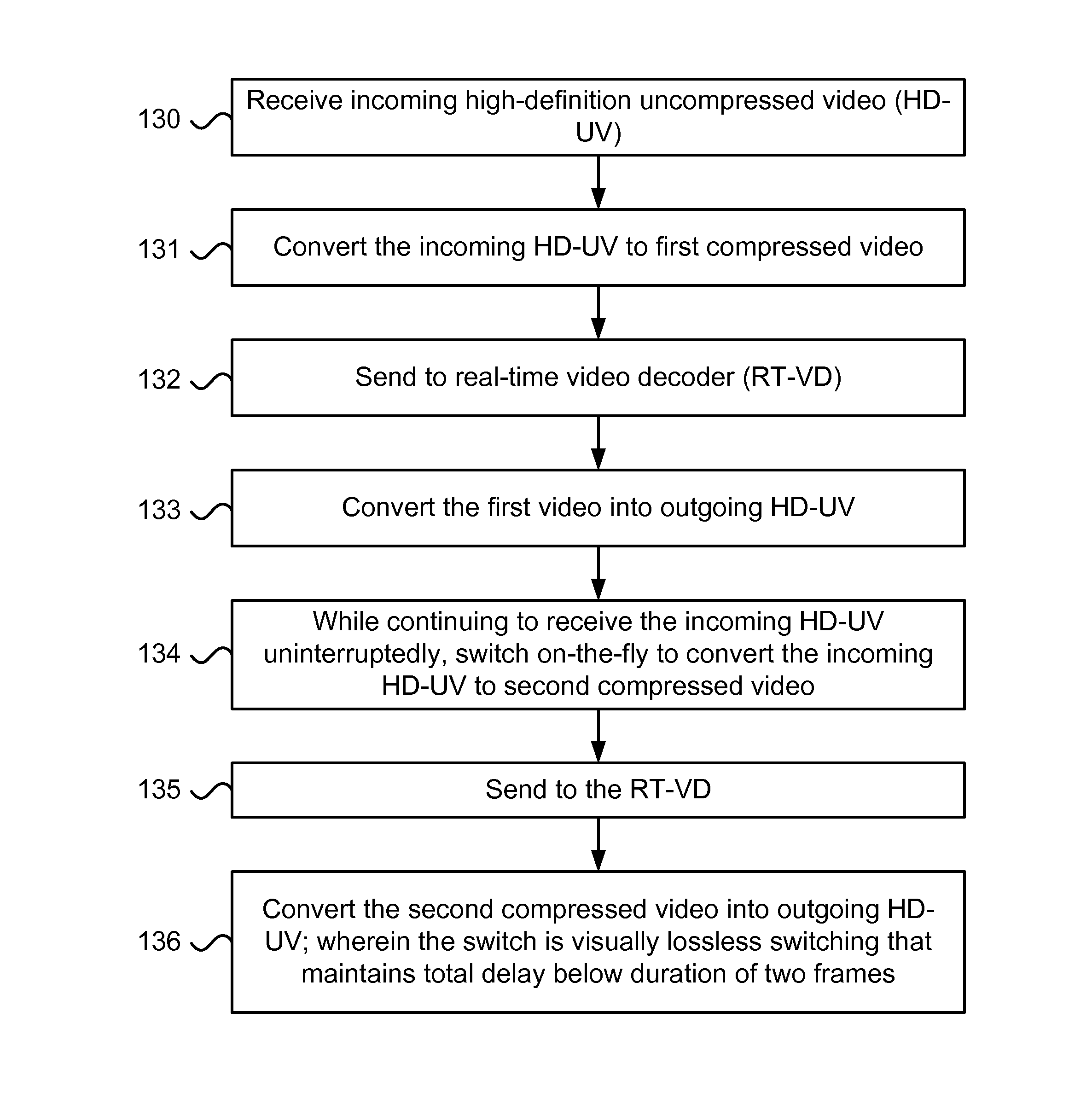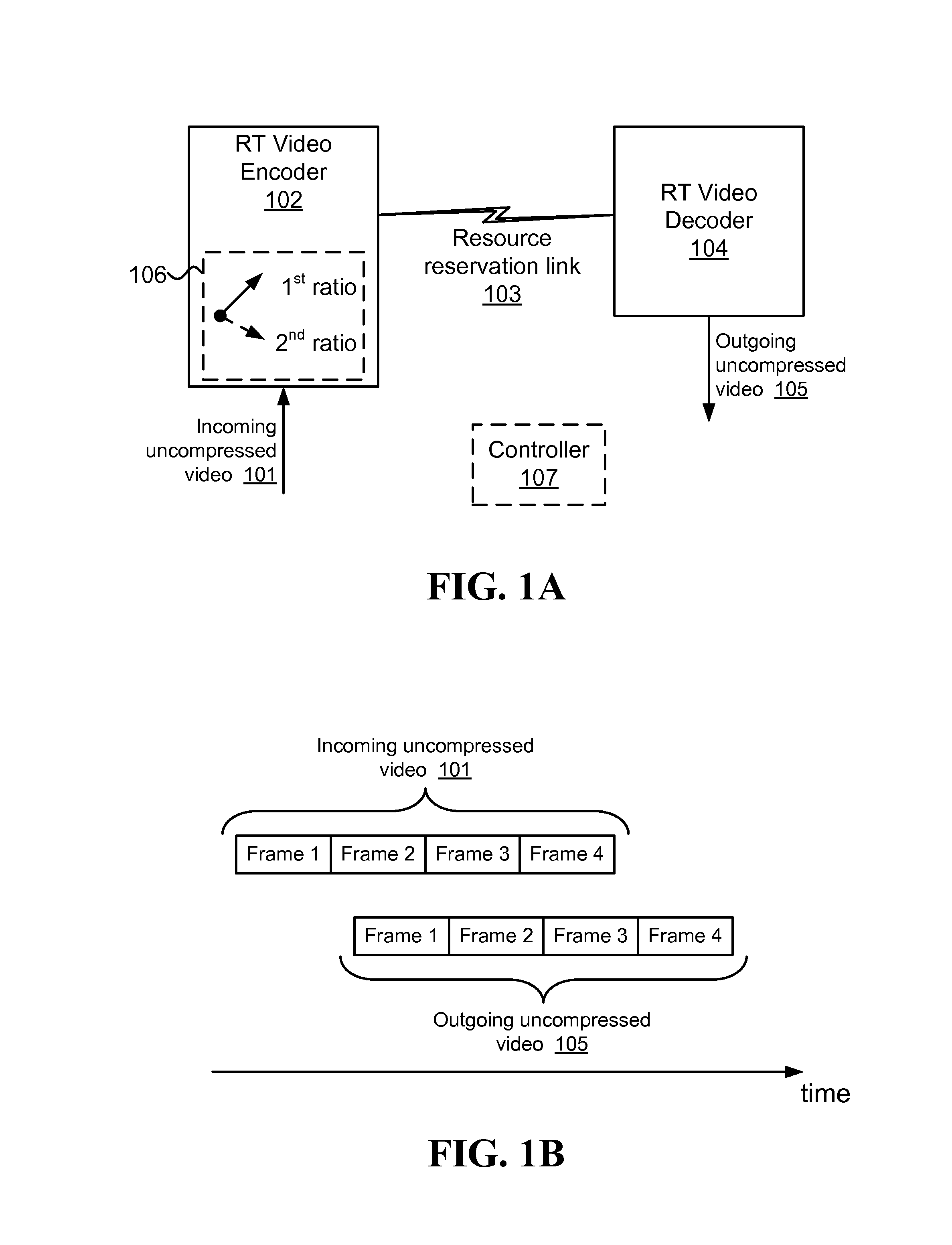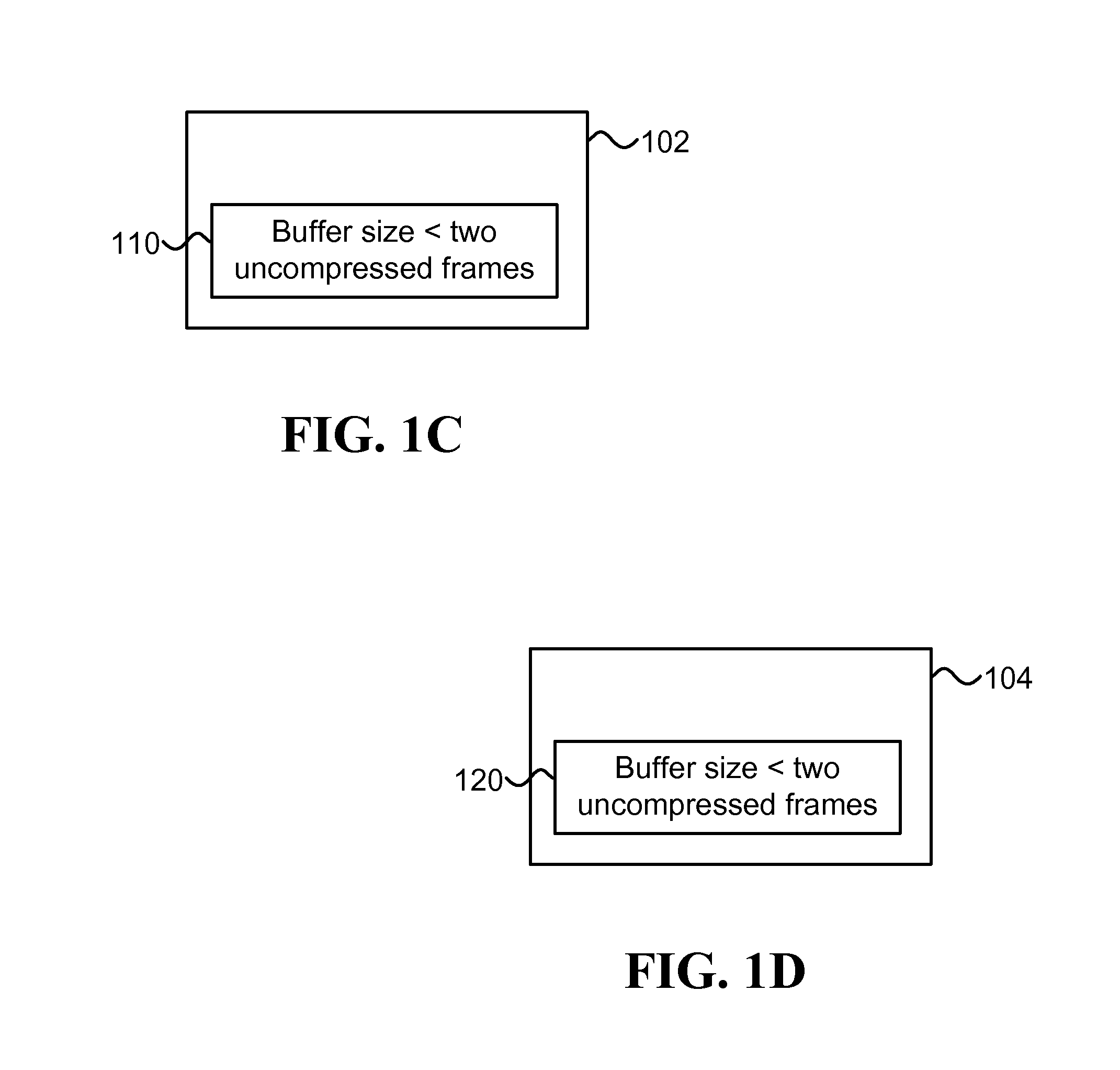Increasing visually lossless compression ratio to provide bandwidth for an additional stream
a visually lossless compression and bandwidth technology, applied in the direction of electrical equipment, television systems, standards conversion, etc., can solve the problem of placing a heavy load on interfaces for transferring uncompressed video data
- Summary
- Abstract
- Description
- Claims
- Application Information
AI Technical Summary
Benefits of technology
Problems solved by technology
Method used
Image
Examples
Embodiment Construction
[0029]FIG. 1A illustrates one embodiment of a low-delay video streaming system having multiple video compression ratios. The low-delay video streaming system includes at least a real-time video encoder (RT-VE) 102 and a real-time video decoder (RT-VD) 104. The RT-VE 102 receives an incoming high-definition uncompressed video (HD-UV) 101, processes the incoming HD-UV according to one of at least two compression ratios 106, and sends the processed video over a resource reservation communication link 103 to the RT-VD 104. In one example, the compression ratios 106 include a first compression ratio between 1:1 to 5:1 (referred to hereinafter as “up to 5:1”), and a second compression ratio that is up to 10:1; the difference between the first and second compression ratios is at least 25%. In some embodiments, the compression delay added by the RT-VE is below the duration of a single video frame for both compression ratios.
[0030]The RT-VD 104 converts the processed video into outgoing HD-U...
PUM
 Login to View More
Login to View More Abstract
Description
Claims
Application Information
 Login to View More
Login to View More - R&D
- Intellectual Property
- Life Sciences
- Materials
- Tech Scout
- Unparalleled Data Quality
- Higher Quality Content
- 60% Fewer Hallucinations
Browse by: Latest US Patents, China's latest patents, Technical Efficacy Thesaurus, Application Domain, Technology Topic, Popular Technical Reports.
© 2025 PatSnap. All rights reserved.Legal|Privacy policy|Modern Slavery Act Transparency Statement|Sitemap|About US| Contact US: help@patsnap.com



